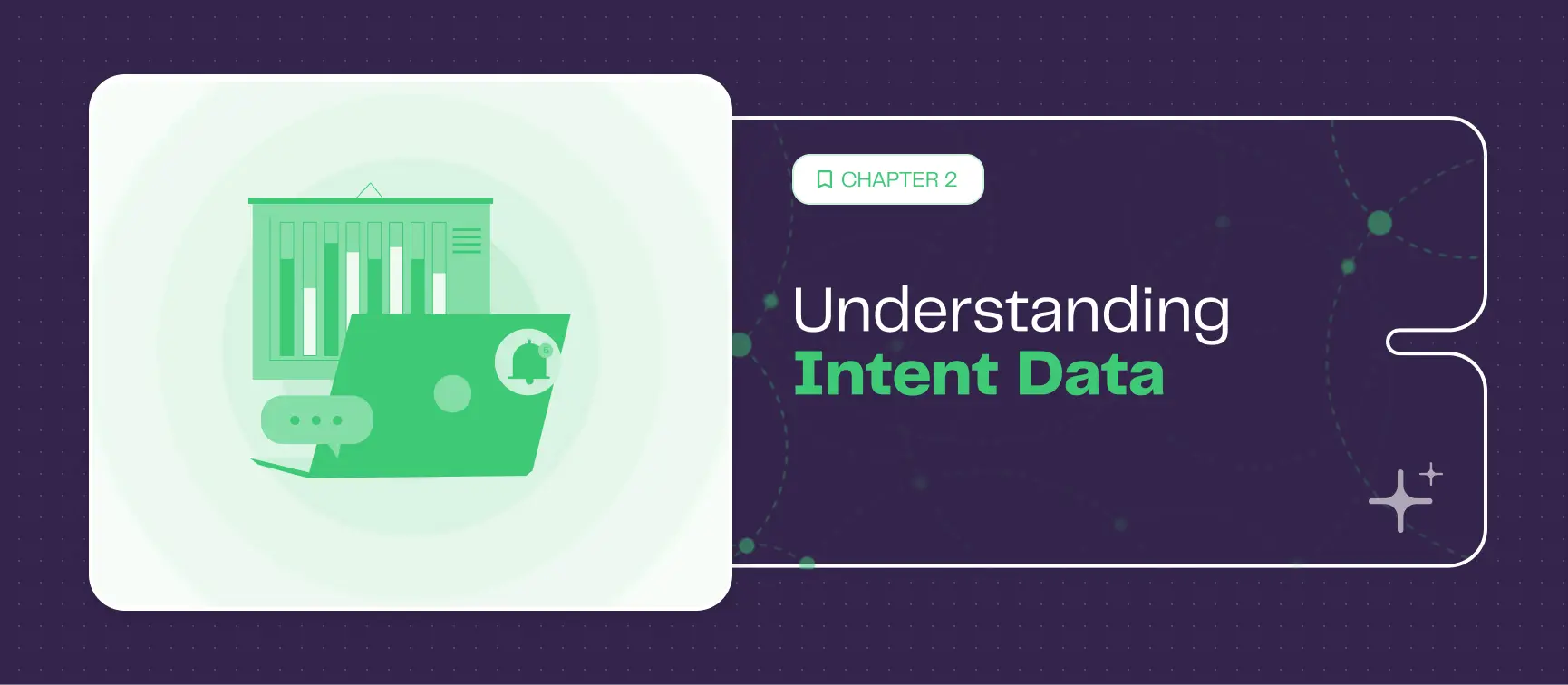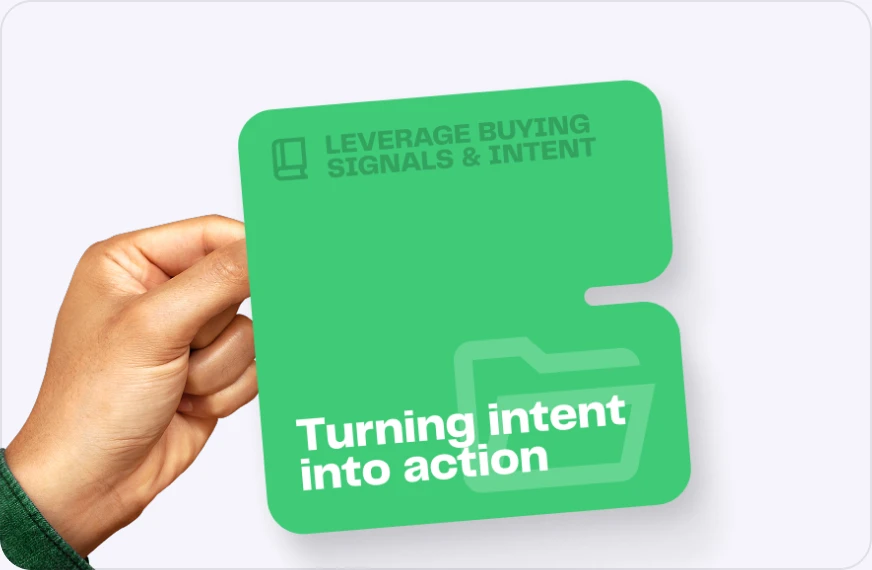
You can’t scale conversations if you don’t know who’s ready to talk. And that’s the core problem intent data solves.
It doesn’t just give you a bigger lead list; it tells you which leads are heating up, where, and why. It separates a cold Outbound guess from a well-timed, high-converting play.
Most teams still rely on firmographic filters, such as industry, company size, and job title. But that’s just table stakes. Intent data brings in the behavioral layer. It tells you who fits your ICP and who’s already doing something that screams, “I’m interested.”
This chapter is your foundation if you’re serious about running more brilliant campaigns, shortening your sales cycle, or simply not wasting your SDR team’s time.
Let’s break it down.
Key things to know about Intent data
What’s an Intent signal?
Intent signals are digital footprints. They’re behavioral clues that someone’s in a buying mindset, whether they’re actively searching for a solution like yours or passively comparing options.
And there are two types you need to understand:
First-party Intent data
This happens on your turf: your website, emails, products, webinars, and chatbots. It’s implicit behavior that indicates interest, even if the lead hasn’t filled out a form.
Examples:
- repeated visits to your pricing page;
- watching 75% of a demo video;
- opening a nurture sequence multiple times;
- clicking a CTA inside a newsletter.
Why it matters:
- It’s exclusive to you.
- It’s easy to connect to your CRM.
- It’s more accurate than third-party data in later stages of the funnel.
Third-party Intent data
This comes from outside your ecosystem. Think of review sites, Google searches, Reddit threads, LinkedIn events, and industry forums; anywhere someone might leave a trace that they’re researching a product like yours.
You don’t own this data; you buy or partner with it. It gives you early visibility—before visitors even land on your site.
Intent data isn’t just about velocity. It’s about relevance at speed.
Why take an Intent-driven approach?
Because most “leads” aren’t leads, they’re just email addresses. Intent data changes that.
When someone shows genuine interest by visiting your pricing page, mentioning your brand on LinkedIn, or attending a competitor’s webinar, they’re telling you something important:
“I’m in research mode. I’m looking. Don’t sell me—help me.”
Intent gives you the unfair advantage of:
- spotting prospects earlier in the funnel;
- triggering outreach at the exact right time;
- personalizing messages to fit where the buyer is;
- skipping the cold intro and jumping straight to relevance.
You’re not just optimizing sequences. You’re prioritizing effort, giving Sales fewer, warmer, higher-converting leads.
And this isn’t just theory.
Intent data vs. trigger events: what’s the difference?
Let’s clear up one of the biggest misconceptions in GTM.
Intent ≠ triggers.
Here’s how to think about it:
- Intent data is about the person. Behavior shows that they’re mentally ready. They’re comparing, searching, and evaluating.Examples:
– Multiple visits to your case studies
– Registering for a LinkedIn Live on Outbound prospecting
– Downloading two white papers in the same week - Trigger events are about the company: External signals that something has changed, new leadership, funding, layoffs, and M&A activity. These don’t tell you someone is ready, but they tell you the timing could be perfect.
The best-performing teams don’t choose between them. They combine both to drive maximum relevance:
- Use triggers to time the outreach.
- Use Intent to personalize the message.
Intent data vs. ABM: opposing concepts or perfect pair?
At first glance, Intent and ABM (Account-Based Marketing) are from different planets.
ABM is about proactively targeting accounts. You build a list of high-fit companies, align Sales and Marketing, and create ultra-personalized plays to engage the top 1%.
Intent data, meanwhile, is about pull. It helps you detect who’s already showing signs of need, whether they’re on your ABM list or not.
But in reality? They work better together.
You use Intent data to:
- Prioritize which ABM accounts are heating up
- Spot “off-list” accounts worth engaging
- Personalize messaging at the contact level
- Trigger outreach based on live behavior, not just static firmographics
In short, ABM gives you the list. Intent tells you who to call first. (See Module 3).
Takeaways
You can’t scale conversations if you don’t know who’s ready to talk. Intent data solves that by spotlighting leads with real buying signals—not just empty email addresses.
- What is buyer intent data? It’s insight into who’s actively researching or comparing solutions, so you engage smarter.
- First-party signals come from your assets (site visits, emails, demos).
- Third-party signals catch attention before the buyer hits your site.
- Intent ≠ triggers. But combined? They’re gold.
- ABM ≠ outdated. It’s just better with Intent layered on top.
- The outcome is fewer leads, better leads, and outreach that lands.
The key advantage? You stop guessing. You know who’s ready, what they care about, and how to show up with value.



